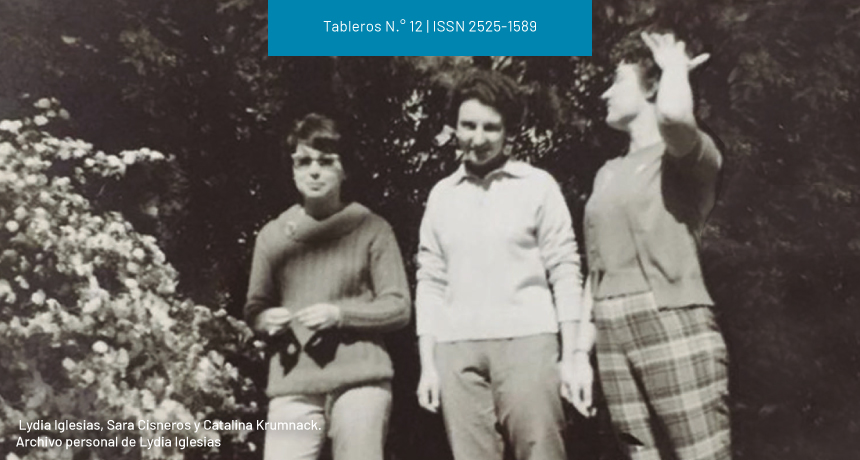The Creation of Design Careers in Argentina
Reflections on His Periodization
DOI:
https://doi.org/10.24215/25251589e014Keywords:
Periodization, design, disciplinary historyAbstract
This article is part of the research project The history of design courses of study in public universities. A comparative analysis (1958 - 2014). It has as its main purpose to propose a periodization of the study cases according to the dates of creation of the investigated courses of study. It seeks to analyze design courses of study from the proposed theoretical framework from a Latin American and critical perspective. Besides, and to conclude, the suggested periodization which was applied to the sample selected for the investigation will be presented. The periodization which has just been mentioned will contribute to creating the structure of the project and the comparative historical analysis.Downloads
References
Bernatene, M. R. (Coord.). (2015). La historia del diseño industrial reconsiderada. La Plata, Argentina: EDULP.
Blanco, R. (2005). Crónicas del diseño industrial en Argentina. Ciudad Autónoma de Buenos Aires, Argentina: FADU.
Bonsiepe, G. y Fernández, S. (Coords.). (2008). Historia del diseño en América Latina y el Caribe. Industrialización y comunicación visual para la autonomía. San Pablo, Brasil: Blücher.
Bonsiepe, G. (2012). Diseño y crisis. Materia Arquitectura, (6), 26-33. Recuperado de http://www.materiaarquitectura.com/index.php/MA/article/view/238
Carranza, M. (2013). Intercambios sobre la enseñanza del Diseño en la Argentina desarrollista. El caso de la Escuela Superior de Bellas Artes en la Universidad Nacional de La Plata. Anales del IAA, 43(2), 183-200. Recuperado de http://www.iaa.fadu.uba.ar/ojs/index.php/anales/article/view/117/105
Crispiani, A. (1996). Las teorías del buen diseño en Argentina. Del Arte Concreto al Diseño para la Periferia. Cuadernos del Instituto de Arte Americano, (74).
Devalle, V. (2009) La travesía de la forma. Emergencia y consolidación del diseño gráfico (1948-1984). Ciudad Autónoma de Buenos Aires, Argentina: Paidós. Devalle, V. y Garone Gravier, M. (Eds.). (2020). Diseño latinoamericano. Diez miradas a una historia en construcción. Bogotá, Colombia: UTadeo.
De Ponti, J. (2012). Diseño y comunicación visual en Argentina. Entre la universidad, la empresa y el Estado (1950- 1970). Rosario, Argentina: Prohistoria.
Heiner, J., Fernández, S., De Ponti, J., Mangioni, V., Gaudio, A. y Bonsiepe, G. (2002). Diseño. HfG Ulm, América Latina, Argentina, La Plata. 5 documentos. La Plata, Argentina: Los autores
Hobsbawm, E. (1991). En torno a los orígenes de la Revolución Industrial. Ciudad de México, México: Siglo Veintiuno.
Iuvaro, C. (1987). La carrera de diseño en Cuyo. TipoGráfica, (3), 4-6. Recuperado de https://www.revistatipografica.com/1987/12/01/tpg-3/
Kogan, H. (1997). 50 años de diseño en Argentina. El Diseño Industrial y el contexto económico. Contextos,1, 40-45.
Ledesma, M. (2018). Luces y sombras en la enseñanza del Diseño. Una reflexión sobre su transformación en el saber universitario. Cuadernos del Centro de Estudios de Diseño y Comunicación, (67), 147- 162.
Meggs, P. (1991). Historia del diseño gráfico. Ciudad de México, México: Trillas.
Ortega, M. (2008). Cincuenta y cincuenta. El estado del diseño en la Mendoza actual. Huellas, Búsquedas en Artes y Diseño, (6), 18-20. Recuperado de https://bdigital.uncu.edu.ar/2519
Samar, L. (Comp.). (2017). Diseño, producción y enseñanza en Argentina: registro de experiencias. Córdoba, Argentina: Historia 2.
Satué, E. (1988). El diseño gráfico, desde los orígenes hasta nuestros días. Madrid, España: Alianza.
Downloads
Published
How to Cite
Issue
Section
License
Copyright (c) 2021 Sofía Marozzi

This work is licensed under a Creative Commons Attribution-NonCommercial-ShareAlike 4.0 International License.
The acceptance of the manuscript by the magazine means the non-exclusive cession of the property rights of the authors in favour of the editor, who allows the reuse, after publication (post print), under a license Attribution-NonCommercial-NoDerivatives 4.0 International.
According to these terms, the material can be copied and redistributed by any means or in any format as long as a) the author and original source of the publication are quoted (magazine and URL of the work), access to the license is provided and whether changes have been made is mentioned; and b) the material is not used for commercial purposes.
The cession of non-exclusive rights means that after the publication (post print) in Tableros the authors can publish their work in any language, means and format; in such cases it must be mentioned that the material was originally published in this magazine. Such cession also means the authorization of the authors for the work to be collected by SEDICI, the institutional archive of the Universidad Nacional de La Plata, and to be spread in the databases that the editorial team considers appropriate to increase the visibility of the publication and its authors.
Moreover, the magazine encourages the authors to deposit their productions in other institutional and thematic archives under the principle that offering the society the scientific and academic production without any restrictions contributes to a greater exchange of the global knowledge.























